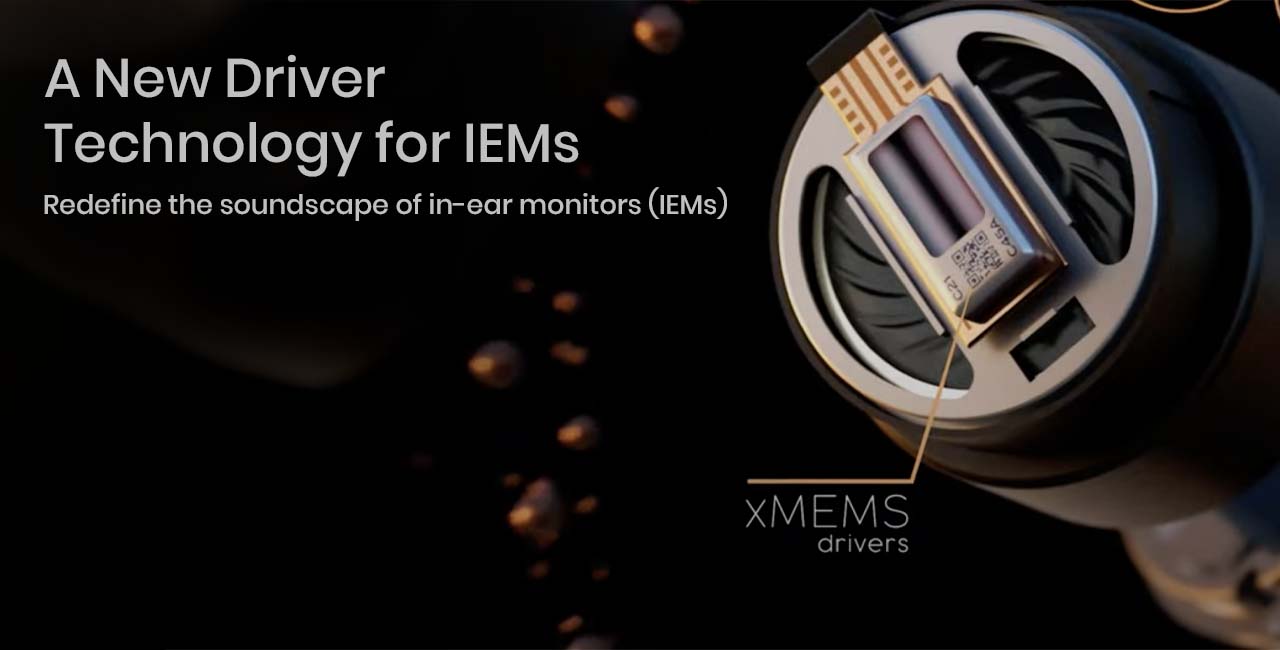xMEMS: A New Driver Technology for IEMs

Imagine a world where your favorite songs are not just heard but felt with unparalleled clarity and detail. Welcome to the future of audio technology, where xMEMS (Micro-Electro-Mechanical Systems) drivers are set to redefine the soundscape of in-ear monitors (IEMs). These tiny yet mighty innovations promise to revolutionize our listening experience, blending precision, efficiency, and compactness in a way that traditional drivers can only dream of.
What are xMEMS Drivers?
MEMS drivers are incredibly small devices that combine mechanical and electrical parts on a micro scale. They are manufactured using processes similar to those used for creating microchips, starting with a silicon wafer and adding various layers to build the final product. This meticulous construction ensures consistent, high-quality performance, setting MEMS drivers apart from traditional audio technologies.
The Mechanics Behind MEMS
While MEMS refers to the manufacturing technique, the transducer principles behind these drivers can vary:
Piezoelectric MEMS: These drivers use the piezoelectric effect to convert electrical signals into mechanical movement, producing sound.
Dynamic (Moving Coil) MEMS: Featuring traditional moving coil mechanisms in a miniaturized form.
Planar Magnetic MEMS: Using a planar magnetic structure for sound reproduction.
Electrostatic MEMS: Employing electrostatic forces to drive the diaphragm.
Most current MEMS speakers utilize piezoelectric principles due to their efficiency and reliability.
Advantages of xMEMS Drivers
Miniaturization: MEMS drivers allow for more compact and lightweight IEM designs without compromising sound quality, enabling the creation of high-performance audio devices that are both comfortable and unobtrusive.
Precision Engineering: The precise manufacturing process of MEMS drivers ensures consistent performance across units, a level of precision difficult to achieve with traditional driver technologies that rely on more variable manual assembly processes.
Energy Efficiency: MEMS technology is often more energy-efficient than traditional drivers, leading to longer battery life in wireless earbuds, a significant advantage for users who need extended listening time without frequent recharging.
Comparing xMEMS to Traditional Drivers
Dynamic Drivers: Known for robust bass response, dynamic drivers require larger diaphragms, often resulting in bulkier IEMs. MEMS drivers, however, deliver impressive bass in a much smaller package.
Balanced Armature (BA) Drivers: Celebrated for their accuracy and detail, especially in mid and high frequencies, BA drivers are now matched by MEMS drivers that offer similar clarity with improved bass response, creating a more balanced sound.
Planar Magnetic, Electrostatic, and Piezoelectric Drivers: Each offers unique advantages like wide frequency response or exceptional clarity. MEMS drivers integrate aspects of these technologies, providing a hybrid solution that capitalizes on their strengths while maintaining the benefits of MEMS construction.
The Future of xMEMS in IEMs
As MEMS technology continues to evolve, its impact on the audio industry is expected to grow. The introduction of MEMS drivers in IEMs like
Singularity ONI

NOBLE Audio XM-1
both featuring cutting-edge designs and materials, marks the beginning of this trend. Companies like Creative are also exploring MEMS in their new IEMs, signaling a broader industry shift towards this innovative technology. And creative and soundpeats launched the tws using mems technology.
CREATIVE Aurora Ace and Ace 2

SOUNDPEATS Capsule3 Pro+
In the near future, Chi-Fi companies are likely to adopt MEMS drivers, offering high-quality, affordable IEMs to a wider audience. This democratization of advanced audio technology will enable more people to experience the benefits of MEMS drivers, from precise sound reproduction to improved comfort and efficiency.












